LITTLE KNOWN HISTORY OF LITTLE AFRICA IN THE PORT REGION OF RIO DE JANEIRO.
Little Africa – Colors, Seasonings, and flavors.
Segment: Afrotourism or Ethnic-Afro Tourism
What is? They are Afro-centric cultural and tourist experiences, where the focus is on black history and culture. Therefore, valuing the material and immaterial heritage of the black population and their identity.
Due to structural racism in Brazilian society, the history of Africans and Afro-descendants was made invisible, erased, and, literally, buried!
The city of Rio was the largest market for enslaved Africans in the world in the 19th century. As a result, African descent counts for 57% of the Brazilian population.
Therefore, Art, Religion, Samba, Carnival, Food, Music… African and Afro-Brazilian culture is everywhere in Brazil.
In essence, along with this experience, you will visit sites related to the African diaspora in Rio de Janeiro and its cultural, musical, and gastronomic legacy.
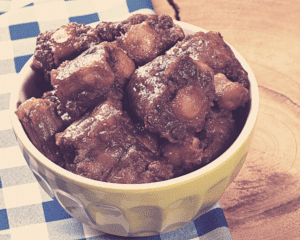
IN ADDITION, A TOUR OF LITTLE AFRICA INCLUDES VISITING ARCHAEOLOGICAL SITES AND PLACES OF SENSITIVE MEMORIES RELATED TO THE PERIOD OF SLAVERY IN BRAZIL, WHICH LAST FOR 300 YEARS.
However, these spaces are also places where Brazilian identity was forged. In this sense, places where Samba (Maximum expressions of Brazilian popular culture) and Carnival in Rio were born.
Highlights
Saúde Neibourhood, Morro da Conceição, Hanging Garden of Valongo, Mercedes Batista Sculpture, Largo da Prainha, Pedra do Sal, Valongo Pier, André Rebouças Docks, IPN Memorial.
In conclusion, when visiting these places of sensitive memories, you will also get to know the history of samba and the construction of Brazilian identity.

Overview
In the diaspora, on Brazilian soil, enslaved Africans had to learn Portuguese, be baptized with Portuguese names, and were forced to convert to Catholicism, thus cutting ties with their culture, and especially with their religion.
The contributions of the African and Afro-Brazilian people to the culture and formation of Brazilian identity are in cuisine, language, dance, music, religion, and the biggest artistic and cultural event in Brazil: Carnival.
The black population turned their pain into overcoming and pride through struggle and resistance.
Rio the Janeiro’s L little Africa – Colors, Seasonings, and Flavors is a more complete experience, immersion in the territory of Little Africa.
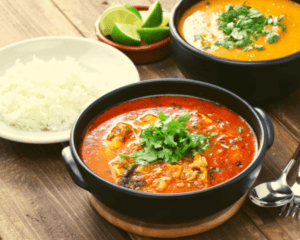
As diversity is part of the Brazilian DNA, we included in this itinerary the flavors of Afro-Brazilian cuisine (an adaptation of dishes of African origin to foods grown in Brazil), as well as the flavors of our diversity: Northeastern, and carioca flavors.
Moreover, African Brazilian flavors such as acarajé, angu, feijoada, and vatapá, among others.
A little history
Afro-Brazilian cuisine has its origin in the arrival of enslaved blacks to the Brazilian colony. The enslaved Africans recreated their delicacies with the ingredients they found here.
– Cassava replaced yam; and instead of sorghum (a cereal widely used by Africans), they started to use maize. In the absence of specific peppers, they resorted to local seasonings and, later, to palm oil.
Dishes prepared by the indigenous people such as pirão, moqueca, and bobó were recreated and enriched with African products such as coconut milk.
Consumer animals of Portuguese colonizers such as chickens gave rise to recipes such as vatapá, northeastern sarapatel, and Xin Xin.
From the moment that the slave trade grew, seeds and seedlings of African plants were brought by the Portuguese, such as coconut, oil palm, and yam, among others, and thus, Africans from the diaspora were able to introduce them to their homeland delicacies.
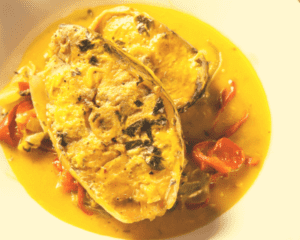
In addition to the daily necessity, African cuisine is linked to religion, as the orixás eat the same as human beings. In the houses (terreiros) of Candomblé, food is prepared to be offered to the saints in their rituals.
Contemporaneously, Africans and Afro-Brazilians began to reproduce the recipes of the foods they offered to their orixás in the main house and, thus, found a way to economically support their family nucleus.
It is important to emphasize, however, that the way of preparing food for the orixás differs from the way it is served to people.
This is how acarajé, for example, left the terreiros(Temples of the African-Brazilian religion) and took to the streets, first in Salvador, and later in Rio.
DISHES OF AFRICAN ORIGIN
Acarajé – Intangible Cultural Heritage
The word “acarajé” comes from the word àkàrà, which means “ball of fire” and is dedicated to the orixá Iansã.
Acarajé is made with black-eyed pea dough, stuffed with vatapá, carry, braised shrimp, and pepper.
angu
The word angu, of Yoruba origin, is a designated porridge made with yams. In the Americas, Africans learned about maize and cassava and began to use these foods to make angu. In order, to increase its nutritional value, it was customary to serve it with meat offal.
Hence the emergence, in the territory of Little Africa (the port area), of the Casa de Zungus/Angu (Corn puree topped with beef offal sauce)
Vatapa
- Vatapá has its origins in the cuisine of the Yoruba peoples and was adapted in Brazil. It takes cashew nuts, palm oil, shrimp, coriander, bread, chili pepper, coconut, and ginger that will be mixed and transformed into a puree.
WHERE TO EAT IN LITTLE AFRICA:
Casa Omolokum celebrates our black ancestry – A Place full of axé!
The votive food served to the orixás is the basis and inspiration for the dishes served at the house.
Typical Bahian cuisine, plus axé & art, in a setting inspired by Afro-Brazilian culture.
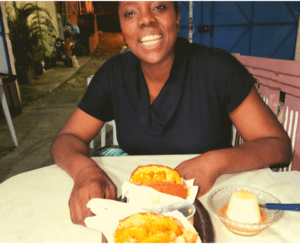
In addition, the Omolokum house is a female entrepreneurship collective:
Hairdressers, tattoo artists, and cocktails, thus promoting sustainability for local trans and lesbians. Friday to Sunday.
“We are a palm food house, valuing the ancestry of this region, praising Tia Ciata and all the ladies who brought this affectionate food. Here we don’t practice religion, but we raise the flag of every cultural part that came through the axé culture. Our cuisine is inspired by votive cuisine, the one offered to the orixás, but adapted to an ‘urban context’, without losing its essence. It’s much more than filling the belly: it’s feeding the body and soul. This is part of Yoruba philosophy.” Words from the chef and owner, Leila Leão, who learned the secrets and discipline of axé food from the matriarchs of her family.
The drinks are on account of the partnership with the bartender from Casa Odara, who only uses Brazilian cachaças and seasonal fruits.
Other popular options include:
Angu do Gomes
Angu do Gomes was elected the most famous and democratic meal in Rio’s gastronomy. It is a Carioca Cultural Heritage.
Bafo da Prainha – Grilled meats. Barbecues on a skewer, pasta’s mayonnaise, farofa, chicken sausage. More suburban flavor impossible.
A Very good afro cuisine restaurant. Bobó da Georgia, fit food, black beans feijoada, shrimp’s feijoada, samba music with food, food with samba music, takeaway.

Snacks and wonderful drinks: Tropeiros bean dumplings, pastries, pies, ham drumstick, Risole de Angu, eggplant popcorn, eggplant chips…
Among the drinks, an audience champion: The Mamata! Made with cachaça, passion fruit, and ginger.
Tendinha.Co or Mercado do Beco
A street tech startup. A collective where small entrepreneurs share space. – Only on weekends.
There are foods and sweets from Bahia, craft beer, sandwiches, crafts, and fashion.
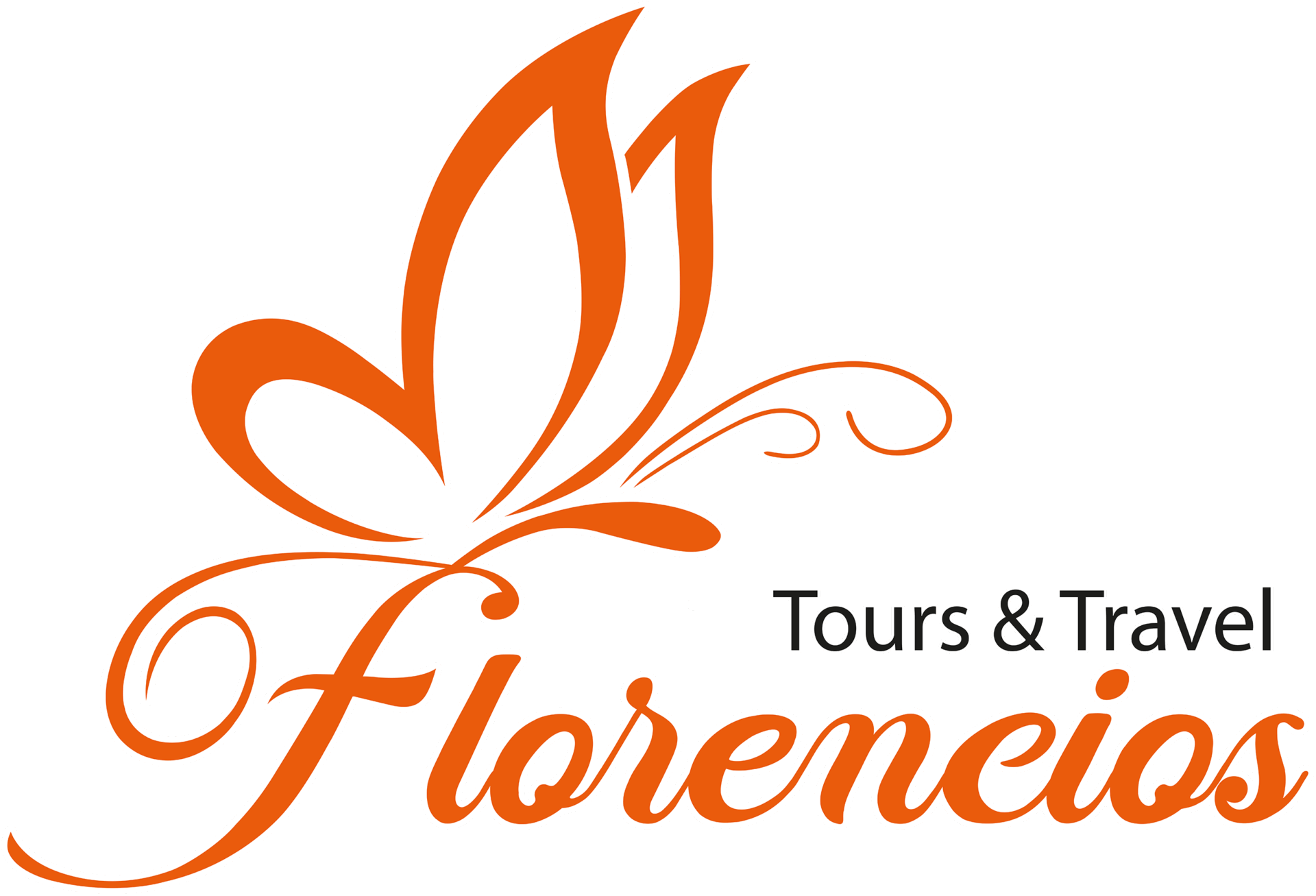
I would like to thank you for the efforts you have put in writing this website. Im hoping to view the same high-grade blog posts by you later on as well. In fact, your creative writing abilities has encouraged me to get my own, personal site now 😉
Right here is the perfect website for anybody who wishes to find out about this topic. You know a whole lot its almost hard to argue with you (not that I personally would want toÖHaHa). You certainly put a new spin on a subject that has been written about for decades. Excellent stuff, just excellent!